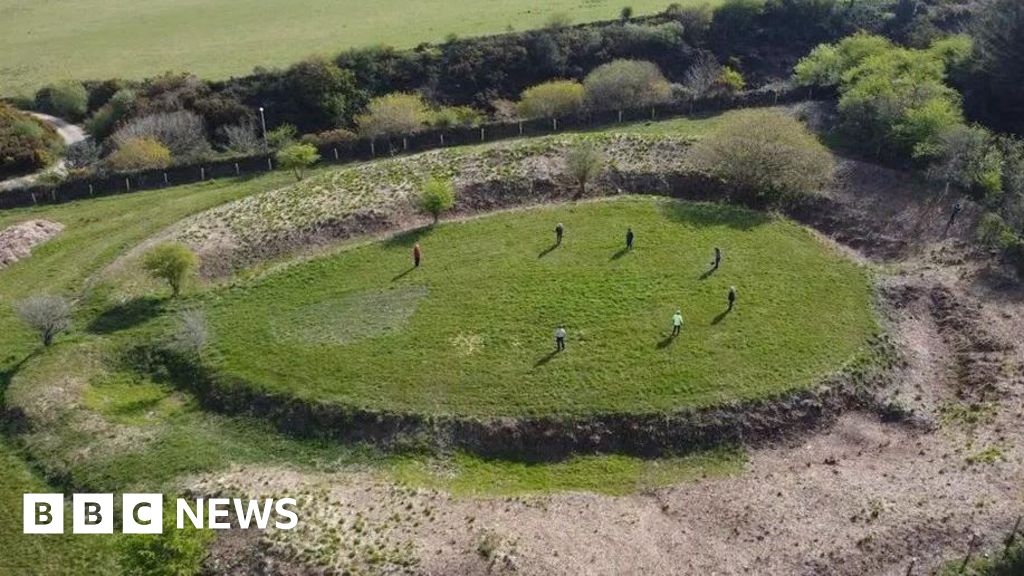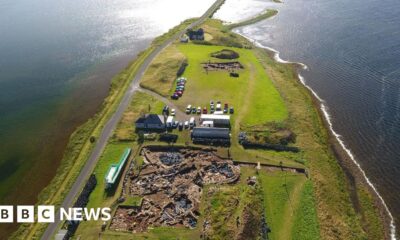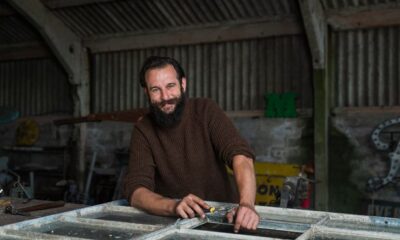Science
Excavation Begins at Cornwall’s Neolithic Stone Circle Site

The excavation of a significant prehistoric ritual site, known as Castilly Henge, has commenced in Cornwall. Experts regard this site as the “ancient sacred heart” of the county, believed to have been constructed during the late Neolithic period, approximately between 3,000 and 2,500 BCE. The project received over £40,000 in funding from the National Lottery, awarded to the Cornwall Heritage Trust (CHT) for the purpose of uncovering a hidden stone circle at the site’s centre.
Located near Bodmin, just off the A30, Castilly Henge features a substantial oval embankment. Archaeological evidence suggests it was used as an amphitheatre-like space for communal gatherings and ritual activities. The site continued to hold significance into the Early Bronze Age, around 2,400 to 1,500 BCE, when several high-status burial mounds were built nearby.
Previous investigations have also proposed that Castilly Henge may have served as a medieval open-air theatre, known as a plen-an-gwari, and as fortified housing for cannons during the English Civil War. The current four-week excavation is a collaborative effort involving the CHT, Cornwall Archaeological Society, and Historic England, aiming to explore the rich history of this ancient monument.
In 2022, researchers identified possible remains of a long-lost stone circle at the site, with only one other known example remaining in Cornwall. Carolyn Kennett, project manager at CHT, expressed her enthusiasm, stating, “Neolithic henges are incredibly rare, so this is a really exciting moment.”
The site faces threats from invasive vegetation and nearby infrastructure, prompting Kennett to emphasize the importance of safeguarding it for future generations. “Our goal is to fundraise to purchase this site and to open it up to the public,” she noted, revealing that over £10,000 of a £50,000 target has already been raised.
Dr. Olaf Bayer, senior archaeological investigator for Historic England, highlighted the connection this site offers to our ancestors. “To discover and hold in your own hands the very tools people of the past had used – it’s the kind of stuff that makes the hair stand up on the back of your neck,” he remarked, underscoring the emotional resonance of such discoveries.
As excavation continues, the hope is that more insights into the lives and rituals of ancient peoples will emerge from this remarkable site. The collaboration between heritage and archaeological organizations aims not only to uncover the past but also to preserve it for educational and cultural enrichment in the future.
-

 Entertainment3 months ago
Entertainment3 months agoAnn Ming Reflects on ITV’s ‘I Fought the Law’ Drama
-

 Entertainment4 months ago
Entertainment4 months agoKate Garraway Sells £2 Million Home Amid Financial Struggles
-

 Health3 months ago
Health3 months agoKatie Price Faces New Health Concerns After Cancer Symptoms Resurface
-

 Entertainment3 months ago
Entertainment3 months agoCoronation Street’s Carl Webster Faces Trouble with New Affairs
-

 Entertainment2 weeks ago
Entertainment2 weeks agoCoronation Street Fans React as Todd Faces Heartbreaking Choice
-

 Entertainment3 months ago
Entertainment3 months agoWhere is Tinder Swindler Simon Leviev? Latest Updates Revealed
-

 World2 weeks ago
World2 weeks agoBailey Announces Heartbreaking Split from Rebecca After Reunion
-

 Entertainment4 months ago
Entertainment4 months agoMarkiplier Addresses AI Controversy During Livestream Response
-

 Science1 month ago
Science1 month agoBrian Cox Addresses Claims of Alien Probe in 3I/ATLAS Discovery
-

 Health5 months ago
Health5 months agoCarol Vorderman Reflects on Health Scare and Family Support
-

 Entertainment4 months ago
Entertainment4 months agoKim Cattrall Posts Cryptic Message After HBO’s Sequel Cancellation
-

 Entertainment3 months ago
Entertainment3 months agoOlivia Attwood Opens Up About Fallout with Former Best Friend





















